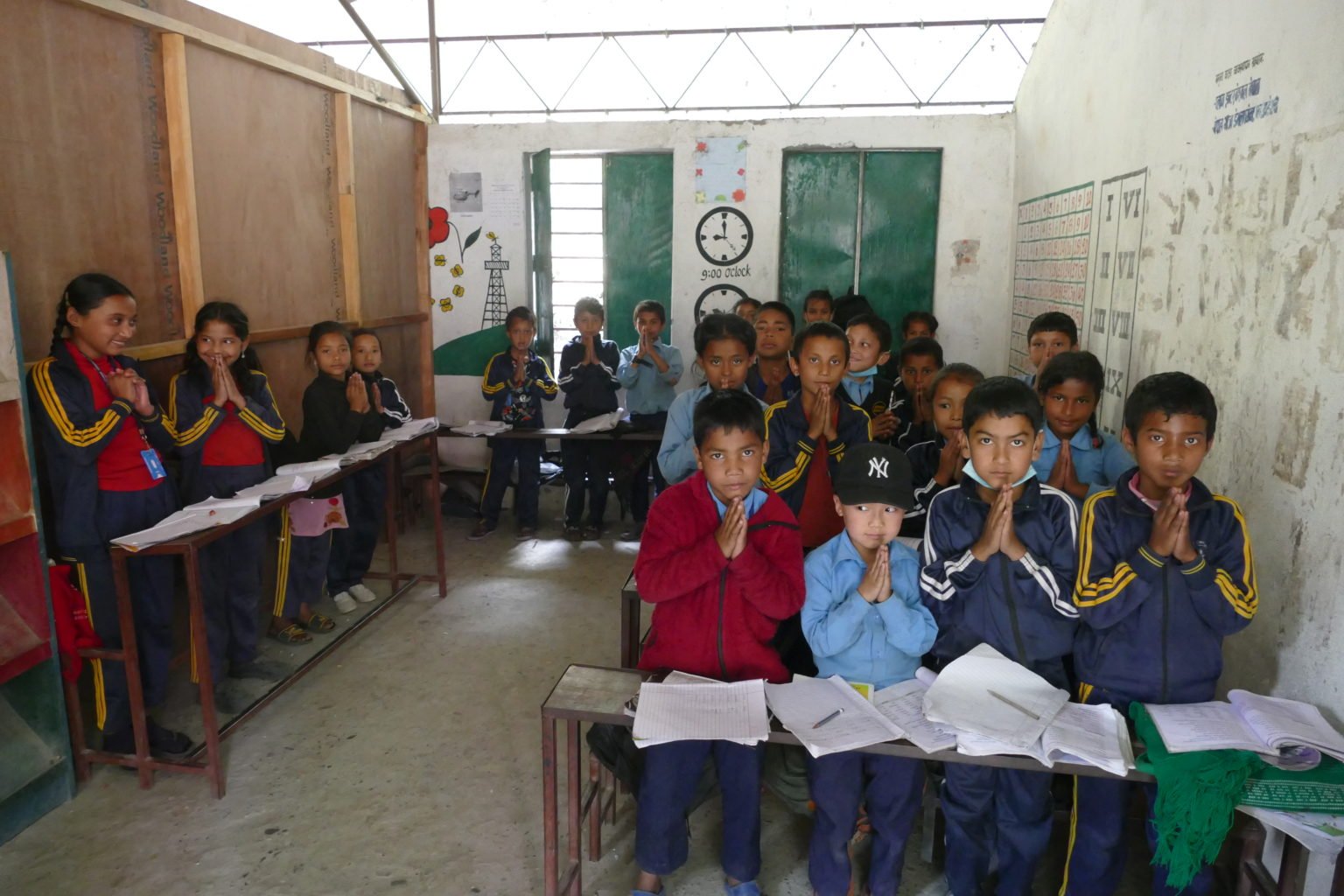Students from Dharbang look forward to their new school
/Shree Janapriya Secondary School is the oldest school in Myagdi District, established in the town of Dharbang in 1951. The original school buildings were on a site very close to the riverbank. In 2001, heavy rainfall caused a flash flood and the riverbank to collapse. Sadly, the main school buildings were swept away. Classes moved to a temporary site in the town, but as student numbers increased to over 600, the existing facility became overcrowded and inadequate, and the quality of education suffered.
Desperately in need of more space and better facilities, the school committee applied to The Gurkha Welfare Trust, and in 2021, construction began on the new school.
During a site visit, GWT staff spoke to some of the students and teachers about conditions at the existing school.
The school is overcrowded and noisy
Devi Bishwakarma, aged 18 and now in grade 12, joined the school in year 10 as there were no high schools near her hometown. Because her house is a 3-4 hour journey from Dharbang, she rents a room near the school. She stays there during the week and at the weekend goes home to see her family, walking as she cannot afford the bus fare. Life is difficult for Devi. She is not from a wealthy family – her father used to work in India and send money home to support his wife and children. Devi’s father sadly passed away two years ago, and it is hard for her to afford the school fees.
Devi says the school is too crowded – there are so many students that the school has to run two shifts, morning and afternoon.
“There are about 95 students in grade 12 in a single class. That’s a lot of students. The students get separated only when we have to study different subjects. Most of the time we study together. Because of the overwhelming number of students, sometimes the class gets very noisy and it is difficult to understand what the teacher is saying.
“But I like this school. It is very good and so are the students. The problem is insufficient classrooms and girl’s toilet. I am not sure about the boy’s toilet but the girl’s toilet is not good and clean.”
“It’s difficult for the children to concentrate and for us to teach.”
The junior classes are taught in a different block about a ten-minute walk from the main school building. Headteacher Indra Tulachand has been teaching at the school since 1982 and teaches all subjects to classes 1-5.
“The school building where I studied was swept away by a flood in 2001. We did not have sufficient space and on top of that the flood took away one of the school buildings so there were fewer classrooms for the students. Now, classrooms have been partitioned with wooden planks. It’s very congested and noisy. It’s difficult for the children to concentrate and for us to teach.”
“Another problem we are facing is that we have this river right next to our school. It’s not safe. The school compound is also not fenced. So, during break time, we constantly have to be on high alert, run after the children so that they won’t go to the edge of the river. We have toilets but they are not sufficient. Students have to queue up to go to the toilet.”
“We are really happy and excited about the new school building”
Students Sunita Bitalu, Anita, Nirjala and Susmita study in grade 10. They walk to school together, a one-hour journey each way. They also talked about the problem of insufficient classroom space.
“In year 10 there are about 100 students. There are a lot of students in our class, which means a lot of noise. It’s more difficult for the students sitting at the back to listen and concentrate on what the teacher is teaching at the front.
We asked the girls about the new school project and how they felt about it.
“We are really happy and excited about the new school building and we wish the school to be the best in the village. We will no longer have morning and day shifts. Everyone can study together with sufficient classes.”
When the school build is completed at the end of the summer, the students will have better infrastructure and much improved learning environment. They also will have new classroom furniture, gender-separate toilets, a clean water supply and handwashing facilities. The building itself will be constructed to earthquake-resilient standard, and the site is away from the river in a safe place where the children, their teachers and parents won’t have to worry about the risk of floods and landslides.



